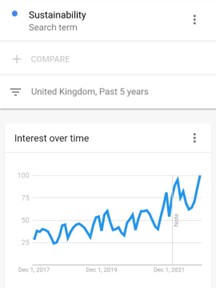Back links to your website for the development of perceived quality has always been a hot topic area for the SEO to understand, manage and optimise. In this post wanted to look at another area of links growing in a search marketing importance: external links to sites of high authority.
In the ‘witch craft’ SEO days, Webmasters and SEOs would hoard page rank by hesitantly linking to good stuff and/or unnecessarily nofollowing links to trusted sources. For this reason, the area of outbound links falls in the shadow of the glitzy, over talked area of generating inbound back links.
There has, for a fair few years been discussion in the SEO industry that external links to reputable, authoritative sites consistently that this is an important ranking signal. From Google’s recent patent regarding the global rank process, a great post by
SEO by the Sea highlights this as a potential ‘reliability signal’ too the engines (specifically Google):
Reliability Signals – These may include:
- The number of external links to pages from a site as well as the authority of external websites that have links to the website. Sites associated with a great amount of external links may be assigned a higher authority value than sites having fewer external links.
We all know that the best informative blogs hold many citations, reference links and media hosted on external sites/platforms – so it makes sense…right? By its nature, your content area would define itself as reliable source of references. But what volume would constitute a ‘great amount of external links?’ For this I decided to stick to what I know a bit better than other content areas: SEO blogs.
8457 pages of
moz.com (18% of the website) has 3763 external html links – 4611 internal links. Wow! Nearly a 1:1 ratio between internal and external links. Yes, this includes external URLs that aren’t contextual; reference links and author links to Google+ for example but all of these can be extremely helpful. Think about this as a signal at an article by article level – how much connectivity is going down – 44% of pages on average had an external link.
We then looked at the same sample percentage (18%) on two other power SEO blogs. 504 external html links out of 3129 pages within Searchenginewatch.com are external links (18%). Within Searchengineland.com 2156 web pages contained 624 external html links (28%).
Outbound links to other sites – the big SEO blogs
How to find your existing external links to websites
Such is the nature of the maturity within SEO, you have more than one option of auditing such data. Here are some web apps and the steps you need to take to find out this data:
What can you do with this information?
1. Measure your number of external links versus internal links and re-measure in 3 months time, after making a concerted effort to boost external links to trusted sources.
2. Create external endorsement posts. Posts that act purely as a hive of good blogs or informational web resources rank very well – the more researched, the more reward you get. An great example of this is creative boom’s list of great design / illustration / UX blogs. Why not aim for a minimum 3 authoritative external links per post. In terms of website authority, you have two avenues: common sense and metrics from 3rd party SEO software such as
Moz.com
3. Think carefully about who you link to, this is after all a real pat on the back to another website. Websites that are fresh in content flow, have some social media traction and longevity are all common sense authority indicators to watch out for.
4. ‘No follow or follow?’ is one of those insular SEO questions. Pick your sources well and you needn’t worry about rel+nofollow tags.

